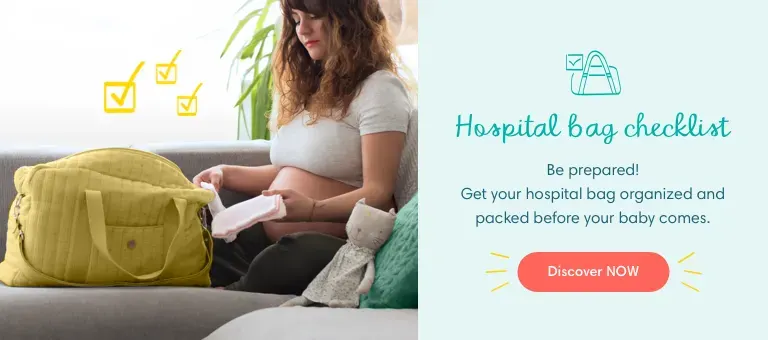When Does Your Baby Drop and How Soon After Will Labor Start?
As their due date approaches, many pregnant people start to wonder when their baby will "drop," settling lower into the pelvis. This process, sometimes called “lightening,” is an important milestone that signals labor is near. It typically happens in the last few weeks of pregnancy, though not everyone will notice it. In this article, we’ll cover when and why your baby drops during pregnancy and how long after this happens labor may start.
What Is Lightening in Pregnancy?
What is lightening, and what does it mean when your baby “drops?” As you get closer to delivery, your baby will likely move into a head-down position and start descending lower and deeper into your pelvis in preparation for labor.
This process is occasionally known as lightening. This is because, as your baby drops low in your pelvis, less pressure is placed on your diaphragm and lungs, causing a lighter feeling.
When Does a Baby Drop?
The process of your baby dropping usually occurs toward the end of your third trimester, anywhere from about three or four weeks before labor starts to within hours before delivery. If you're wondering “what week does a baby drop?” there is no specific week that this happens; however, it’s typically sometime in the eighth or ninth month of pregnancy.
How Long After a Baby Drops Does Labor Start?
When your baby is head down and settled into your pelvis, how long will it be till labor begins, you may wonder? Well, the length of time between your baby dropping and labor starting can vary greatly. Some parents-to-be go into labor as early as a few hours after their baby drops, while others may not go into labor until a few weeks later.
It’s also common to wonder how long after your baby drops does labor start in a second pregnancy. The answer to this also varies, but the process of your baby dropping generally occurs later in second pregnancies than in first pregnancies. And babies don’t always drop before labor. Occasionally, babies can drop during labor—especially if you've had a previous pregnancy.
Signs Your Baby Has Dropped
While some pregnant people experience very few or no signs that their baby has dropped, others may have clear indications. If you’re wondering what it feels like when your baby drops, or what a dropped belly looks like, below are some signs and symptoms of lightening to look out for:
Pressure in your pelvis and hips
Increased pressure on your bladder, which may cause frequent urination or some leaking of urine
Easier breathing due to decreased pressure on your lungs and diaphragm
Feeling more kicks and movements from your baby below the belly button (as opposed to all over the abdomen)
A change in your center of gravity—you may feel slightly off balance
A change in your posture or in the shape and size of your bump—your pregnant belly may look lower like it has dropped, or tilt forward more
Remember, every pregnancy is unique, and you may or may not detect some or any of the signs and symptoms of your baby dropping. Your experience may also depend on whether this is your first pregnancy or a subsequent one, and how low you were carrying your baby throughout your pregnancy.
If you think labor has started and you’re experiencing contractions, you may want to time them. Our Contraction Tracking Chart below is a useful resource to have when labor starts:
What Happens if Your Baby Doesn’t Drop by 40 Weeks?
As we mentioned above, every pregnancy is different. Some pregnant people may not notice when their baby drops, and occasionally, a baby may drop during labor rather than before labor starts. During your regular checkups, your healthcare provider will be monitoring the position and location of your baby in the uterus and will determine whether your little one is in a head-down position before labor or in another position, such as breech.
If you’ve noticed your baby dropping, labor may be near or just a few weeks away. So it’s a good idea to be aware of the other signs and symptoms of labor so you know what to look out for and when to contact your healthcare provider.

When to Contact Your Healthcare Provider
As we mentioned earlier, your baby dropping is a natural process that may signify labor is a matter of hours or weeks away.
If you feel your baby dropping as you near your due date, you don’t necessarily need to contact your healthcare provider right away unless you’re experiencing signs that labor has started, such as contractions or your water breaking.
Many pregnant people may wonder how to get their baby to drop. It’s important to note that your baby dropping occurs naturally as your body prepares itself for giving birth. Be patient and let this wonderful process happen on its own. If you have any questions or concerns, contact your healthcare provider.
FAQS AT A GLANCE
When your baby drops, you may feel “lighter, with less pressure on your diaphragm and lungs, making it easier to breathe. It’s also common to experience more pressure in your pelvic area and on your bladder, which may increase your need to urinate.
Remember, every pregnancy is unique, and not everyone will notice their baby dropping.
The Bottom Line
Feeling your baby drop is a signal that labor is near and your new arrival is on the horizon. Your baby dropping down is a natural process and means that your little one is settling deeper into your pelvis in preparation for delivery. In the weeks or hours before labor, you may feel your baby has dropped lower, which might cause a lighter feeling as any pressure on your diaphragm or lungs is released—this is where the word “lightening” comes from. You may also feel more pressure in your lower body, experience frequent urination, or notice your bump looks lower or tilts forward more. To ensure you’re prepared for labor, make sure you know the other signs and symptoms to look out for, and get ahead by packing your hospital bag.
How We Wrote This Article The information in this article is based on the expert advice found in trusted medical and government sources, such as the American Academy of Pediatrics and the American College of Obstetricians and Gynecologists. You can find a full list of sources used for this article below. The content on this page should not replace professional medical advice. Always consult medical professionals for full diagnosis and treatment.


